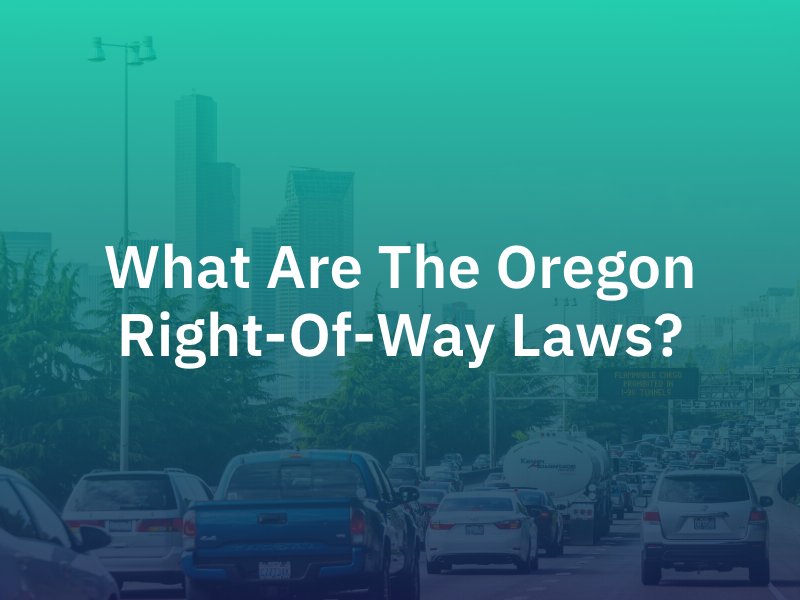What Are The Oregon Right-of-Way Laws?
Posted on March 9, 2020 in Car Accident
It is vital that everybody on the roadway understands right-of-way laws. These laws are in place to prevent serious accidents from occurring, and they keep order on the roadway. The right-of-way laws in Oregon are similar to those in other states, so here we want to offer a brief refresher of some of the most common right-of-way situations you may encounter. A high percentage of car accidents in Portland revolve around failing to yield the right-of-way, so understanding these laws will certainly help with roadway safety.

Stop signs
Motorists must come to a complete stop at a stop sign and wait for any vehicle that has the right-of-way. If there is a four-way stop, the vehicle that arrives first has the right-of-way. If two vehicles arrive at the same time at a four-wait stop sign, the driver on the left must yield to the driver on the right.
Open intersections
Open intersections are defined as intersections with no traffic signals or stop signs. When entering into an open intersection, drivers must yield the right-of-way if there is already another vehicle in the intersection. If two vehicles enter into an intersection at the same time, the driver on the left must yield to the driver on the right. Drivers waiting to make a left turn at an intersection must yield to oncoming traffic and make the turn only when it is reasonably safe to do so.
Roundabouts
Roundabouts are designed to help keep a steady flow of traffic by allowing all vehicles to continuously move slowly through an intersection. When a vehicle approaches a roundabout, drivers must yield to traffic already in circulation inside the roundabout and merge only when it is clear to do so.
School buses
It is illegal to pass a school bus when the vehicle is stopped and its red lights are flashing. This is the case even when a school bus is coming from the other direction of a four-lane highway and there is a painted median or center turn lane. All vehicles must stop and remain stopped until the red lights stop flashing and the “stop” sign on the bus retracts. The only exception to this is if you are on a divided highway and the two sides are separated by an unpaved median strip or barrier. In this case, only drivers on the same side as the bus must stop.
Pedestrians
Drivers are required to yield to any pedestrian at a crosswalk, whether marked or unmarked. Vehicles approaching another vehicle that is stopped at a pedestrian crosswalk should not pass the stopped vehicle.
Emergency vehicles
Drivers must yield the right-of-way to any emergency vehicle that is approaching with its lights flashing and siren sounding. If you are approaching an emergency vehicle on the roadway that has its lights activated, Oregon drivers are required to move to another lane if possible or slow down to at least five miles an hour under the posted speed limit.
Funeral processions
Oregon law grants the right-of-way to funeral processions. In many other states, funeral procession right-of-way is not mandatory and is done so out of driver’s compassion and consideration. However, violating a funeral procession’s right-of-way in this state can lead to the same penalties as any other failure to yield violation.
Penalties for violation
There is no point system for driver’s licenses in Oregon, but drivers could face significant fines for failing to yield the right-of-way. Fine amounts vary widely and are at the discretion of individual counties in the state.
